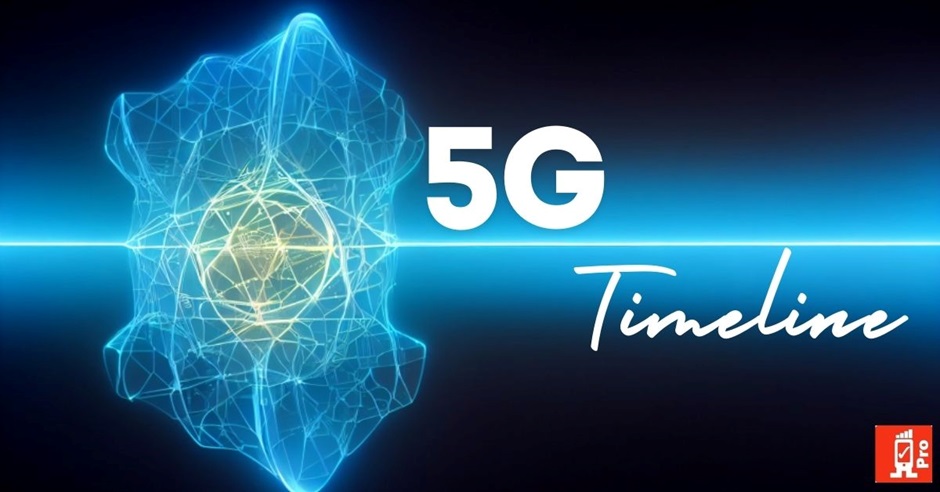Introduction to 5G Core Migration
Transitioning to a 5G Core to support 5G standalone (SA) operations is crucial for mobile carriers to avoid long-term constraints tied to the dependence of NR on LTE. The primary motivation behind this shift is the market’s demand for rapid NR coverage expansion across the nation. Currently, low band deployment using non-standalone (NSA) is limited due to the lack of support for low-low EN-DC band combinations in terminals. However, this constraint is expected to lessen as support is introduced in new terminals by late this year and more broadly by 2023. So, now let us see Is Your Network Ready for 5G Core Migration? Exploring the Future of SA and NSA Deployment along with User-friendly 5g tester, 5G test equipment, 5g network tester tools and User-friendly LTE RF drive test tools in telecom & RF drive test software in telecom in detail.
5G NR Non-Standalone (NSA)
The core principle of 5G Non-Standalone (NSA) operation is leveraging existing LTE infrastructure and the EPC, rather than deploying a new 5G core network. In NSA, User Equipment (UE) remains on LTE in idle mode, with the NR carrier added as a secondary carrier based on LTE’s decision. This addition is typically triggered by traffic-related factors, such as buffer status or QoS requirements. LTE controls the primary carrier handover. In some NSA deployment scenarios, the user plane anchor point can transfer to NR, bypassing the need to route user plane traffic via LTE, though the radio resource control remains with the LTE primary carrier.
5G NR Standalone (SA)
Standalone (SA) operation refers to a 5G gNodeB using a new 5G Core instead of the existing LTE infrastructure and ePC. SA means NR operates independently of LTE, making NR the primary node. In this setup, adding a secondary LTE eNB can be optional, depending on the deployment option. Some interpretations of SA exclude the secondary LTE node entirely (option 2 only). All 5G SA options are built on a new 5G Core, with the network steering terminals between options. Base stations support multiple options simultaneously, based on the UE they serve.
Drivers for 5G Core Adoption
The shift to a 5G Core is driven by several factors. A 5G Core is essential for enabling NR to operate without relying on LTE, thus avoiding non-standalone constraints. The 3GPP has prioritized 5G Core development over EPC evolution, making it a matter of timing rather than necessity for operators to adopt 5G Core.
From a RAN perspective, a new 5G Core allows NR deployment coverage without LTE dependencies, especially for 700 MHz and small cell deployments. Full coverage benefits of NR at 700 MHz are limited without SA, as many terminals require an LTE anchor in mid-bands under NSA. Moreover, a 5G Core provides lower control plane latency and quicker access to NR low-latency bearers from power-efficient UE states. Currently, NR does not control its usage or primary cell selection procedures, a gap filled by 5G Core.
For campus networks, the evolution towards 5G technology is clear, with benefits such as new network-IDs, slicing, and Layer 2-based networking from 5G Core. In the Fixed & Mobile Convergence (FMC) area, 5G Core supports converged networks, with features like ATSSS enabling multiple access networks and a pathway to future FMC offerings. Enhanced security mechanisms in 5G Core, such as integrity protection of the user plane, also stand out. These mechanisms do not impact mobility between 5G Core and EPC, with security contexts transferable and non-critical re-authentication occurring post-handover. No new SIMs are needed for 5G Core, with necessary data provisioned over-the-air (OTA).
5G Core Timeline
Most operators plan for a mainstream SA introduction using 5G Core around 2022-23, aiming to benefit from low band deployments. Factors like slicing, FMC, and low latency will further drive SA adoption post-2023. Small-scale 5G Core deployments could start earlier, around the second half of 2021, especially for campus networks.
Mainstream SA use in urban areas may be delayed until NR-supporting terminal penetration is high, likely by 2025 or later. Rapid NR-supporting terminal penetration could allow many LTE-only carriers to switch to NR-only carriers without DSS. SA support might still be required in specific areas (e.g., rural) or for applications insensitive to user data rates. Handover to LTE outside NR coverage is enabled by a new Combo-core supporting 5GC and EPC interworking. Rapid NR footprint expansion post-SA introduction is recommended to reduce LTE-only areas unconnected to 5G Core.
5G Core Introduction
For initial mainstream eMBB services, SA introduction necessitates fast nationwide NR coverage. Achieving this, especially in rural areas, requires deploying NR in low bands like 700 MHz. Nationwide 700 MHz deployment will take several years. Without SA, NR coverage in low bands depends on LTE mid-band anchors, limiting coverage and adding costs. Terminal support for low-low ENDC band combinations is unclear, with initial terminals expected by 2020 and broader support by 2022. By 2023, most terminals might lack this capability, though support should increase.
Legacy EPC must continue supporting older terminals, including 4G CSFB devices. Interworking between 5G Core and EPC is crucial for UE handovers to LTE cells outside NR coverage. All LTE and NR base stations should connect to the new Combo-core supporting EPC/5GC, ensuring mainstream service support and avoiding NSA fallbacks.
Some countries face a 700 MHz coverage obligation by 2022, aiming for mainstream SA introduction with 5G Core by 2022-23. All NR base stations will connect to a 5G Core, with SA support activated across the NR footprint. The new 5G Core is expected to support all mainstream services, including eMMB and initial URLLC services, by 2022-23. LTE base stations will connect to an associated EPC, supporting interworking with 5G Core. A selection mechanism will direct packets to the appropriate core network based on customer subscription and terminal capability, ensuring seamless service across legacy and 5G technologies. Also read similar articles from here.




